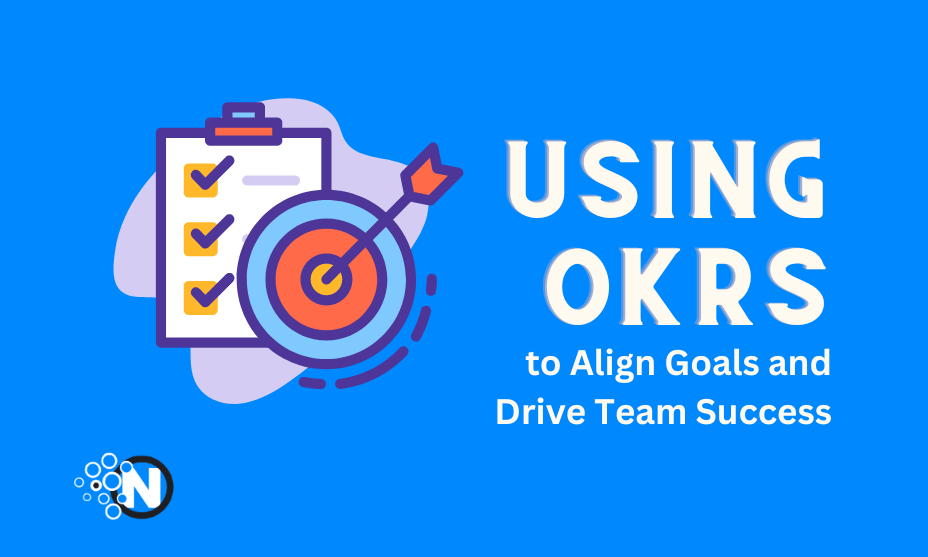Using OKRs to Align Goals and Drive Team Success

In this’s fast-paced business landscape, aligning goals and driving team success is crucial. Objectives and Key Results (OKRs) provide an effective framework for goal-setting and performance management.
This article explores the concept of OKRs, their benefits, implementation strategies, and best practices. Furthermore, it highlights how OKRs contribute to building a positive workplace culture, promoting transparency, collaboration, accountability, and continuous learning. Understanding the potential of OKRs allows organizations to drive goal attainment while fostering an environment of collaboration, innovation, and individual growth.
Understanding OKRs
OKRs are a goal-setting framework that helps organizations define and track objectives and key results. Objectives are high-level goals that articulate what needs to be achieved, while key results are measurable milestones that indicate progress toward the objectives. OKRs provide a clear and concise way to communicate goals, align teams, and foster accountability.
The Importance of Using OKRs for Teams
Using OKRs (Objectives and Key Results) offers numerous benefits for organizations, teams, and individuals. Here are some of the key advantages of implementing OKRs:
1. Alignment
OKRs foster alignment within teams and across the organization. By setting clear objectives and key results, everyone can work towards a common purpose. This alignment ensures that efforts are coordinated and directed towards shared goals, minimizing the risk of conflicting priorities and maximizing overall productivity.
2. Focus and Prioritization
OKRs provide a framework for prioritizing tasks and activities. By setting specific objectives and measurable key results, teams can focus their time and resources on the most impactful initiatives. This helps avoid wasting efforts on low-priority tasks and enables teams to concentrate on what truly drives success.
3. Clarity and Transparency
OKRs bring clarity to the goal-setting process. They articulate what needs to be achieved and how success will be measured. This clarity promotes transparency within teams and the organization as a whole, ensuring that everyone understands their roles and how their work contributes to the larger objectives. Visible OKRs also encourage open communication and collaboration across different teams and departments.
4. Motivation and Engagement
OKRs have a positive impact on motivation and employee engagement. Clear objectives provide a sense of purpose and direction, allowing individuals to understand how their contributions make a difference. As progress is measured through key results, employees can see their impact and feel a sense of achievement, which boosts motivation and engagement levels.
5. Adaptability
OKRs allow for adaptability in a rapidly changing business environment. As objectives are typically set for shorter periods (e.g., quarterly), they can be revised and adjusted to align with evolving circumstances. This flexibility enables teams to respond to emerging opportunities, address challenges, and remain focused on the most relevant goals.
Read Also: The Benefits of Optimizing Test Environments for Software Development Teams
6. Continuous Learning and Improvement
OKRs promote a culture of continuous learning and improvement. By setting ambitious objectives, teams are encouraged to think creatively and explore new approaches. The key results provide measurable feedback that informs future decision-making and supports iterative improvements. OKRs encourage experimentation, risk-taking, and learning from both successes and failures.
7. Accountability and Ownership
OKRs promote a sense of accountability and ownership among team members. When individuals are involved in the goal-setting process and have a clear understanding of their responsibilities, they become more committed to achieving their objectives. OKRs provide a measurable framework that holds individuals and teams accountable for their performance, enhancing overall responsibility and driving results.
8. Organizational Agility
OKRs facilitate organizational agility by providing a clear direction and a mechanism for adapting goals as needed. With OKRs, organizations can quickly pivot, realign resources, and adjust objectives to seize new opportunities or address emerging challenges. This agility enables organizations to stay responsive and competitive in a rapidly changing business landscape.
Using OKRs brings numerous benefits, including alignment, focus, clarity, motivation, adaptability, continuous learning, accountability, and organizational agility. By implementing OKRs effectively, organizations can optimize their performance, drive team success, and achieve their strategic objectives.

Best Practices for Using OKRs
To effectively utilize OKRs and harness their potential for aligning goals and driving team success, it is important to follow certain best practices:
1. Keep Objectives Ambitious and Inspirational
Objectives should stretch the team’s capabilities and inspire them to achieve greatness. Aim for objectives that challenge the status quo and encourage innovative thinking. Ambitious objectives create a sense of purpose and motivate teams to go above and beyond their usual performance.
2. Make Key Results Specific and Measurable
Key results should be well-defined, quantifiable, and time-bound. They should provide clear milestones that indicate progress towards the objectives. Avoid vague or subjective key results and instead focus on measurable outcomes that can be objectively assessed. This ensures clarity and enables teams to track their progress effectively.
3. Cascade OKRs to All Levels of the Organization
OKRs should be cascaded throughout the organization, from top-level objectives to team-level objectives. This ensures alignment and creates a clear line of sight from strategic goals to individual contributions. Cascade the OKRs in a way that connects different levels, allowing teams and individuals to understand how their work contributes to the broader organizational goals.
4. Foster Collaboration and Cross-Functional Alignment
Encourage collaboration and alignment between teams and departments by linking objectives and key results that require shared responsibility. This promotes cross-functional cooperation, breaks down silos, and facilitates the exchange of knowledge and resources. Collaboration enhances the collective effort towards achieving organizational objectives.
5. Review and Update OKRs Regularly
OKRs should not be set in stone for the entire year or quarter. Regularly review and update them as needed to ensure they remain relevant and aligned with changing circumstances. Allow for flexibility and adaptability, as unforeseen challenges or opportunities may arise that require adjustments to the objectives or key results.
6. Establish a Rhythm of Check-Ins and Feedback
Regular check-ins and feedback sessions are vital for the successful implementation of OKRs. Schedule frequent meetings to review progress, discuss challenges, and provide support to teams. These sessions offer opportunities for managers to offer guidance, celebrate achievements, and identify any necessary course corrections.
7. Create a Culture of Learning and Continuous Improvement
Encourage a growth mindset within the organization. Embrace failures as opportunities for learning and improvement. Encourage teams to experiment, take calculated risks, and iterate on their OKRs based on the insights gained. Foster a culture where mistakes are viewed as learning experiences, and the focus is on continuous growth and development.
8. Provide Support and Resources
Ensure that teams have the necessary resources, tools, and support to achieve their objectives. Clear any roadblocks that hinder progress and provide the guidance and training required to succeed. When teams feel supported, they are more likely to be motivated and empowered to deliver exceptional results.
By implementing these best practices, organizations can effectively leverage OKRs as a powerful tool for aligning goals, driving team success, and achieving remarkable outcomes.
Overcoming Challenges in OKR Implementation
Implementing OKRs may face challenges along the way, but organizations can overcome them with proper strategies and approaches. Here are some common challenges in OKR implementation and how to address them:
1. Resistance to Change
Change can be met with resistance, especially if it disrupts established routines or traditional goal-setting methods. To overcome this, communicate the benefits of OKRs to employees, emphasizing how they contribute to individual growth, team alignment, and overall organizational success. Provide training and support to help employees understand and embrace the new approach.
2. Unrealistic or Unclear Objectives
Setting objectives that are too vague or unrealistic can hinder progress. To address this, ensure that objectives are specific, measurable, achievable, relevant, and time-bound (SMART). Involve stakeholders in objective setting to gain diverse perspectives and ensure clarity. Regularly review objectives to ensure they remain aligned with the organization’s evolving needs.
3. Lack of Alignment or Coordination
Misalignment between teams and departments can result in conflicting priorities and hinder progress. Establish cross-functional collaboration and communication channels to align OKRs throughout the organization. Encourage regular check-ins and foster a culture of collaboration to ensure teams are working towards shared objectives.
4. Inadequate Tracking and Measurement
Without proper tracking and measurement, it is difficult to assess progress and make informed decisions. Implement a robust tracking system that allows teams to monitor key results and share progress transparently. Regularly review and update key results to reflect changing circumstances or priorities.
By addressing these challenges head-on, organizations can ensure a smoother implementation of OKRs. Clear communication, alignment, and ongoing evaluation and adjustment will enable teams to navigate potential hurdles and reap the benefits of the OKR framework.
Conclusion
Using OKRs as a goal-setting framework can significantly contribute to aligning goals and driving team success. By implementing OKRs, organizations can improve goal clarity, foster collaboration, and enhance performance.
Despite challenges, proper planning, implementation strategies, and adherence to best practices can ensure successful adoption of OKRs. As organizations continue to evolve, leveraging OKRs can become a key driver for achieving strategic objectives and staying ahead in the competitive business landscape.




